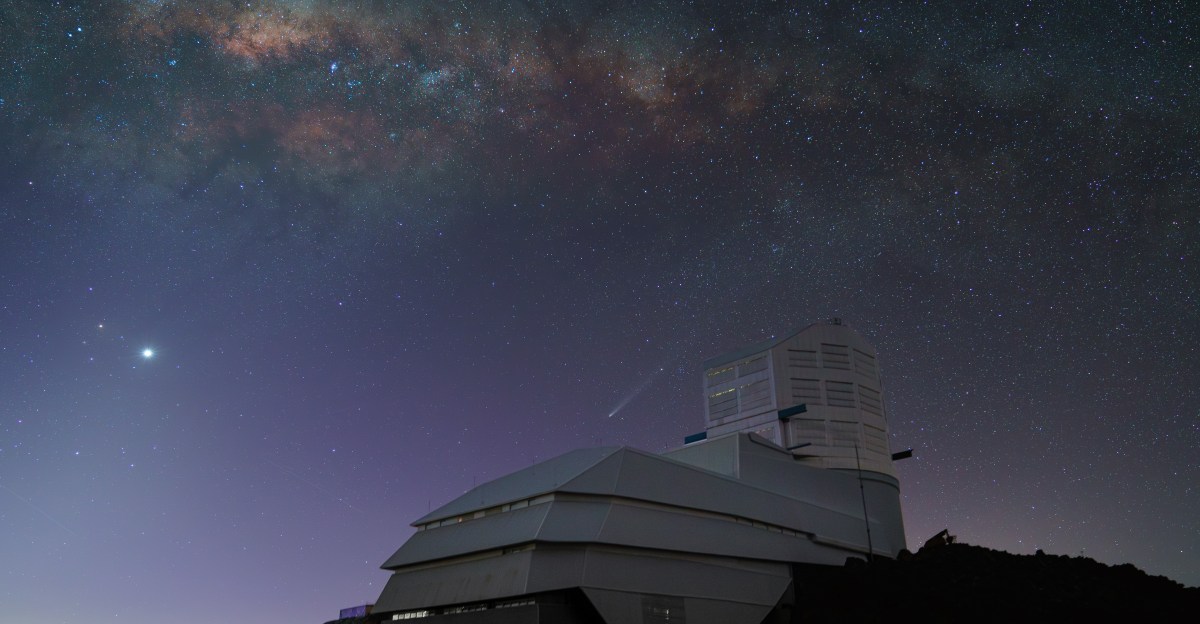CERRO PACHÓN, CHILE – In a groundbreaking astronomical achievement, the Vera C. Rubin Observatory has unveiled its first light images, capturing a staggering 10 million galaxies in a single frame. This monumental event marks a significant milestone in the observatory’s mission to explore the cosmos and unlock the mysteries of the universe.
Immediate Impact
Perched high in the Chilean Andes, the observatory’s debut images provide an unprecedented glimpse into the vastness of space. The images, which were released to the public, show a vibrant tapestry of galaxies, each a testament to the universe’s complexity and scale. The observatory, funded by the US National Science Foundation and the Department of Energy, aims to survey the Southern Hemisphere sky over the next decade.
Key Details Emerge
The observatory’s primary instrument, the 3.2-gigapixel LSST Camera, is the largest digital camera ever constructed. It captures a swath of the night sky equivalent to 45 full moons every 30 seconds, enabling detailed observations of cosmic phenomena. The headlining image, dubbed the “Cosmic Treasure Chest,” is a composite of 1,185 exposures of the Virgo Cluster, located 55 million light-years away.
Nearly every object in the image is a galaxy, highlighting the vastness of the universe.
By the Numbers
The Rubin Observatory’s capabilities extend beyond capturing stunning images. In just 10 hours of initial data collection, its software identified 2,104 new asteroids, including seven near-Earth objects (NEOs). This achievement underscores the observatory’s potential to enhance planetary defense efforts significantly.
5 million asteroids and 100,000 NEOs expected to be cataloged over the next decade.
Expert Analysis
According to Jake Kurlander, a graduate student astronomer at the University of Washington, “It took 225 years of astronomical observations to detect the first 1.5 million asteroids. Rubin will double that number in less than a year.” This rapid advancement highlights the observatory’s transformative impact on space science.
Background Context
Named after pioneering astronomer Vera Rubin, the observatory was constructed to conduct the Legacy Survey of Space and Time. This ambitious project aims to address fundamental questions about dark matter, dark energy, and the formation of the Milky Way, among other cosmic phenomena.
The observatory’s strategic location at 8,660 feet in the Andes provides optimal conditions for observing the night sky, free from light pollution and atmospheric disturbances.
What Comes Next
As the observatory continues its mission, it will transform the way we understand the universe. The data collected will be shared globally, allowing scientists and enthusiasts alike to explore the cosmos through the Skyviewer app, which offers a dynamic view of celestial objects captured by Rubin’s powerful lens.
While the world faces numerous challenges, the Vera C. Rubin Observatory serves as a reminder of humanity’s capacity for innovation and discovery. Its images offer a profound perspective, emphasizing our place in a universe filled with wonder and mystery.
As Walt Whitman once wrote, “I wander’d off by myself, In the mystical moist night-air, and from time to time, Look’d up in perfect silence at the stars.” The observatory’s first light images invite us to do the same, to look up and embrace the infinite possibilities that lie beyond our world.
